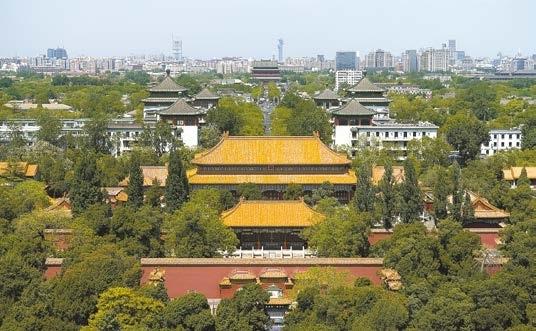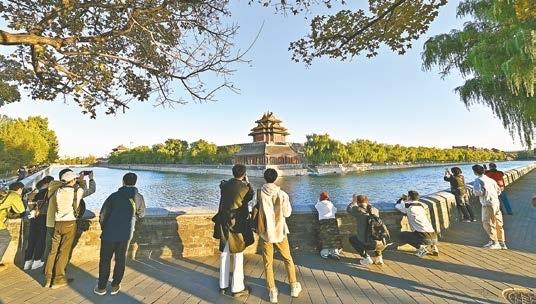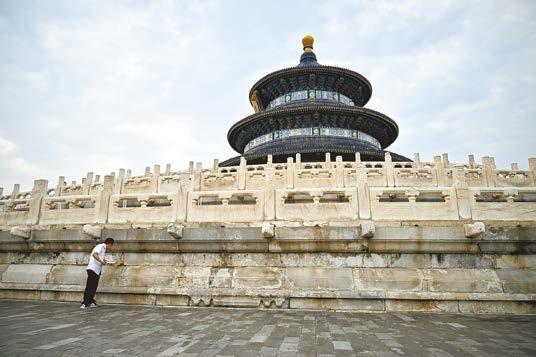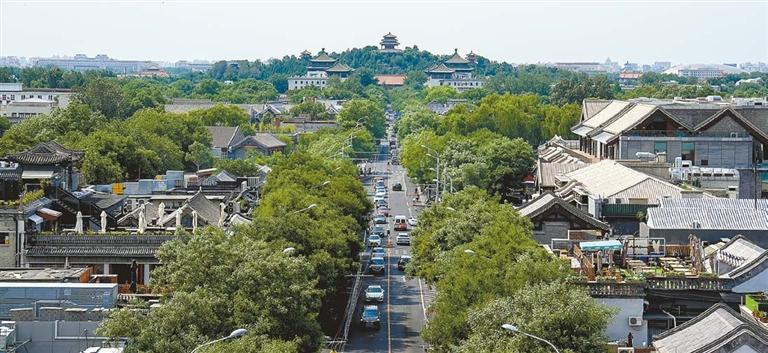



THE Beijing Central Axis has been added to the United Nations’ cultural heritage list, signifying prestigious recognition for the 700-year-old line of historical and cultural landmarks traversing the heart of the Chinese capital. At a recent session in India, UNESCO inscribed the north-south axis, dubbed the “spine of the city’s culture,” on the World Heritage List. Beijing, with a history of over 3,000 years, has served as the Chinese capital for 870 years, making it a treasure trove of cultural heritage. The Beijing Central Axis, the best-preserved example of traditional central axis architecture in China, extends 7.8 kilometers from Yongding Gate in the south to the Bell and Drum Towers in the north. According to UNESCO, the former imperial palaces and gardens, sacrificial structures, and ceremonial and public buildings along the Central Axis bear testimony to the city’s evolution and exhibit evidence of the imperial dynastic system and urban planning traditions of China. This latest inclusion brings the total number of World Heritage sites in China to 59. Historical legacy The Central Axis can be traced to the 13th century in the Yuan Dynasty (1271-1368), while its length was extended in the Ming (1368-1644) and Qing dynasties (1644-1911). “Beijing’s Central Axis is the longest city axis in the world. It is the product of some of the best urban planning in history,” said Christa Reicher, a professor at Germany’s Aachen University and also a UNESCO Chair for Cultural Heritage and Urbanism, in an exclusive interview with Xinhua. “It is regarded as the ‘spine of the city’s culture’ and a magnet for tourists from all over the world. Many ancient Chinese buildings from the imperial era are gathered here,” she said. Fifteen heritage components, including the Bell and Drum Towers, Wanning Bridge, Jingshan Hill, the Tian’anmen Square Complex, the Forbidden City and the Temple of Heaven, are located on or alongside the axis. It integrates diverse historical relics like imperial palaces and ceremonial sites, providing substantial evidence of the culture of rites that endures today, as well as traditional urban management methods, said Lyu Zhou, director of the national heritage center at Tsinghua University. The Beijing Central Axis was planned and built according to the core layout of an ideal capital city, characterized by the “royal court in the front, market in the back, ancestral shrines on the left, and sacrificial altars on the right.” From ancient buildings to modern structures, the axis adheres to the ancient notion of “selecting the center,” expressing the philosophical concepts of harmony and symmetry that are deeply cherished in Chinese civilization. “The architecture and landscapes of the Beijing Central Axis vividly illustrate the emphasis on rites and order in traditional Chinese capital planning,” Lyu said. Present-day vitality Walking into Beijing Zhongshan Park, one is immediately enveloped by the serene atmosphere of the Altar of Land and Grain, a site where ancient Chinese emperors once held sacrificial ceremonies to honor the land and grain. “It was the first royal altar in Beijing to be transformed into a city park,” said Gai Jianzhong, an official with the park’s management office. For over 700 years, the Beijing Central Axis has served as a central spine around which the city developed. The once-imperial capital has evolved into a modern metropolis, with royal palaces, gardens and temples along the axis gradually converted into public parks or museums, allowing ordinary citizens to visit. Over the years, Beijing has implemented a series of measures to retain the traditional touches of the Central Axis and its cultural heritage, including archaeological excavations, improvement of surrounding environments, the protection and restoration of artifacts and the creation of digital displays and products. Throughout the more than 10-year World Heritage application process, the city has successfully preserved its cultural heritage, established protection coordination mechanisms, and improved legal and regulatory systems, according to Deng Chao, an official with the National Cultural Heritage Administration. “The inscription of the Beijing Central Axis on UNESCO’s listing is not an ending but a new start,” Deng said. The success also drew delighted responses from local residents and tourists alike. “The efforts to protect the axis have better preserved old Beijing’s narrow alleys and traditional courtyards, safeguarding our childhood memories from being lost amid the city’s rapid development,” said Zhang Wei, a resident who lives near the axis. For Italian sinologist Michele Ferrero, who has lived in Beijing for over a decade, cycling is his favorite way of exploring the Central Axis. “The fusion of ancient and modern along it is truly captivating. I love experiencing the charm of traditional culture and the spirit of order that the Chinese people hold dear,” he said. According to Reicher, a successful bid for UNESCO status is expected to bring multiple benefits to Beijing, including increased international attention, enhanced recognition of its historical value, and economic benefits as a tourist magnet. “I would very much like to experience the axis in Beijing in person,” she said. (Xinhua) | 
